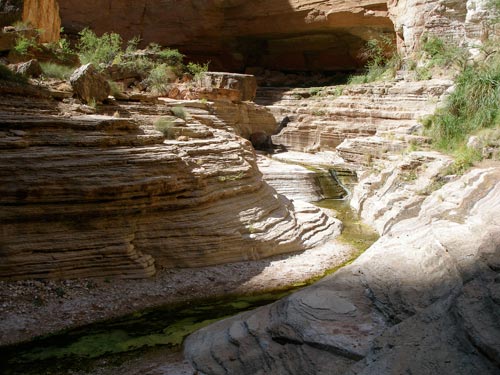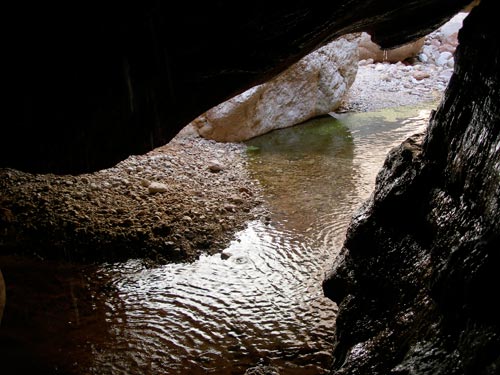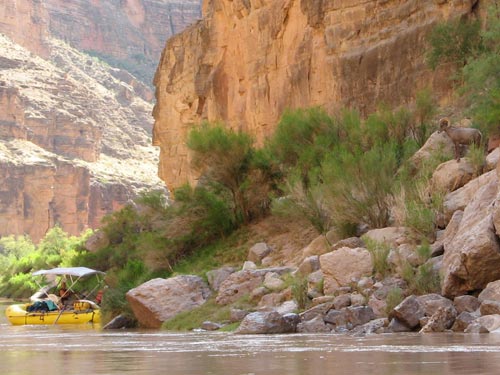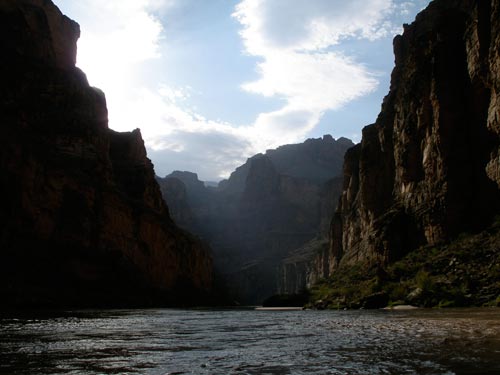After helping packe up the rafts, I partook in a hike up Matkat Canyon. It was a rather scary, gravelly hike, but the reward was a lovely, terraced canyon that followed the narrow stream.
Matkatamiba (or just Matkat) Canyon is named for a Havasupai family. The Havasupai are a Native American tribe who has lived in the Grand Canyon for at least the past 800 years.

From camp, it is about a half mile of very perilous hiking along the rocky steep cliff to the mouth of the canyon. Upset Rapids can be seen in the distance.

Down below are water-filled narrows.

At the top end of the narrows is the 'patio'.

The water was a glowing green.

Inside a wet cavern

The canyon continues on, getting taller and taller. Note the person for scale.


Mysterious drill holes lined the walls.

The Cardinal Monkeyflower typically grows along streams and moist areas. The flower gets its name because some species resemble a monkey's face. Native Americans and early travelers in the American West used this plant as a salt substitute to flavor wild game.
We returned from our hike and all set out on the rafts.
Upset Rapid (at mile 149.7) is a 3-8 on the scale with a 15-foot drop. At the end of it is a giant hole not visible from upstream (it is hidden at the bottom of the rapid below a large wave train). A hole is where water flowing over a rock or other obstacle flows down, then back onto itself in an eruption of whitewater. Big ones can easily flip boats.

Upset Rapid


Massive canyon walls



Trying to get a photo of a Desert Bighorn Sheep (in the upper right, watching us from a rock).



A pair of Great Blue Herons

The changing light
Tonight's camp is at Fern Glen.

Waiting for dinner

return • continue

